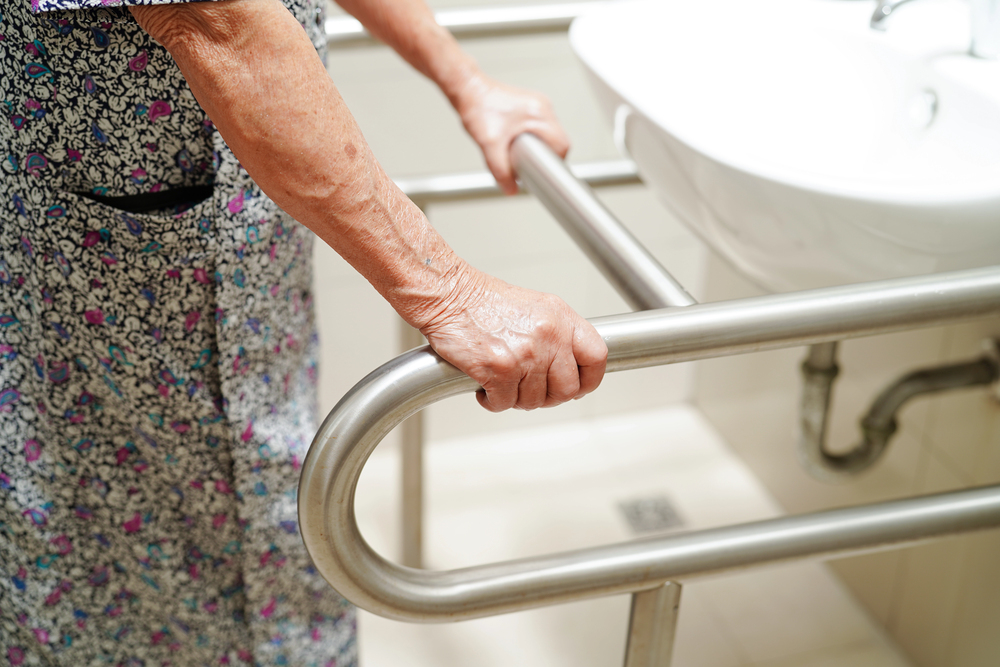Home Safety for Seniors
Make your home safer for elderly loved ones. Learn key tips on home safety for seniors, from fall prevention to smart upgrades.

As our loved ones age—or as we prepare for our own later years—it's worth asking a simple but important question: is your home safe for seniors? Whether you're planning ahead or supporting elderly parents, making thoughtful adjustments around the house can go a long way in promoting comfort, confidence, and day-to-day safety.
This guide walks you through the key areas every homeowner should assess. While some changes are straightforward, many benefit from professional installation. If you need assistance, ServiceSeeking can connect you with experienced local tradies to help get the job done right.
1. Eliminate Trip Hazards
Falls are one of the most common causes of injury for older adults—and they often happen at home. Here’s what to keep in mind:
- Remove loose rugs or secure them properly.
- Declutter walkways. Narrow hallways and corners can be difficult to navigate.
- Ensure cables and cords are neatly tucked away.
- Fix uneven flooring or thresholds.
If you’re unsure whether your home’s flooring presents a risk, it’s worth getting a qualified handyman or flooring specialist to inspect it.
2. Improve Lighting Throughout the House
Good lighting can make all the difference in preventing falls or accidents:
- Install nightlights in bedrooms, hallways, and bathrooms—particularly for those who get up during the night.
- Add motion sensor lights at entryways or staircases.
- Use brighter bulbs in commonly used areas like the kitchen, living room, and bathroom.
For electrical upgrades or lighting installation, consider hiring a licensed electrician through ServiceSeeking.

3. Safer Bathrooms
The bathroom can be especially hazardous for seniors. Slippery surfaces and low toilets create risk. Consider the following:
- Install grab bars near the toilet and inside the shower.
- Replace bathtubs with curbless showers or add a shower chair and handheld showerhead.
- Opt for higher toilet seats to ease the strain on joints.
- Use non-slip mats both inside and outside the shower.
For these modifications, it’s best to bring in a qualified plumber or bathroom renovator.
4. Make Staircases Safer
If the home has stairs, it’s important to make them as safe as possible:
- Add sturdy railings on both sides of the staircase.
- Mark step edges with contrasting tape or paint for better visibility.
- Ensure proper lighting on stairways.
If mobility is declining, homeowners may want to explore installing a stair lift or converting a downstairs room into a bedroom.
5. Safer Entryways and Exits
Your front door and other access points should be easy to use and navigate:
- Install non-slip outdoor tiles or textured ramps.
- Add railings to any steps.
- Ensure the doorway is wide enough for mobility aids like walkers or wheelchairs.
- Consider electronic locks with keypads for ease of access and emergency entry.
These are all tasks where a builder or carpenter can offer helpful solutions.
6. Rework the Kitchen and Storage
Bending, reaching, or climbing can all pose risks in the kitchen. Here’s what helps:
- Store frequently used items at waist height.
- Swap out round knobs for lever-style handles.
- Choose easy-to-clean countertops and low-maintenance finishes.
- Install pull-out shelves or soft-close drawers for better access.
A kitchen renovation doesn’t have to be major—but it’s worth discussing your needs with a professional.

7. Future-Proofing
What works today might not be practical in five years. Future-proofing is about anticipating changing needs:
- Pre-wire for bidets and heated toilet seats.
- Upgrade plumbing and electrical systems with ageing in place in mind.
- Replace old HVAC systems for consistent comfort.
If you're updating utilities or renovating for long-term use, ServiceSeeking can help you find trusted electricians, plumbers, and builders.
8. Emergency Preparedness
Emergencies happen—and seniors living alone need simple, reliable systems:
- Install medical alert systems (worn as a pendant or watch) that can call for help.
- Use a basic mobile phone with large buttons and pre-programmed emergency contacts.
- Consider voice assistants like Alexa, set up to call for help if needed.
Even simple changes—like moving the phone closer to the bed—can make a big difference in a time of need.
9. Furniture and Movement Aids
Many older adults use furniture to steady themselves, but this can backfire if the furniture moves:
- Avoid lightweight or wheeled furniture in key areas.
- Add bed rails or chair handles to help with getting up safely.
- Rearrange furniture to create wide, unobstructed pathways.
A local carpenter or handyman can install support rails or customise furniture as needed.
10. When to Call in the Professionals
While it might be tempting to tackle some changes yourself, safety updates are best left to the experts. Hiring a licensed tradie ensures:
- Proper installation of grab bars and rails
- Electrical updates are compliant and safe
- Structural modifications are done correctly
- Less stress and faster results
Use ServiceSeeking.com.au to find trusted local professionals for everything from plumbing and bathroom upgrades to lighting and carpentry. You can post your job, compare quotes, and read reviews—all in one place.
Making your home safe for seniors doesn’t mean turning it into a hospital. With thoughtful changes, you can create a space that’s supportive, practical, and still feels like home. Whether you’re updating your space for your own future or adapting for a parent or grandparent, now is the right time to start.
Need help getting it sorted? Find a trusted tradie through ServiceSeeking today and make your home safer—step by step.
